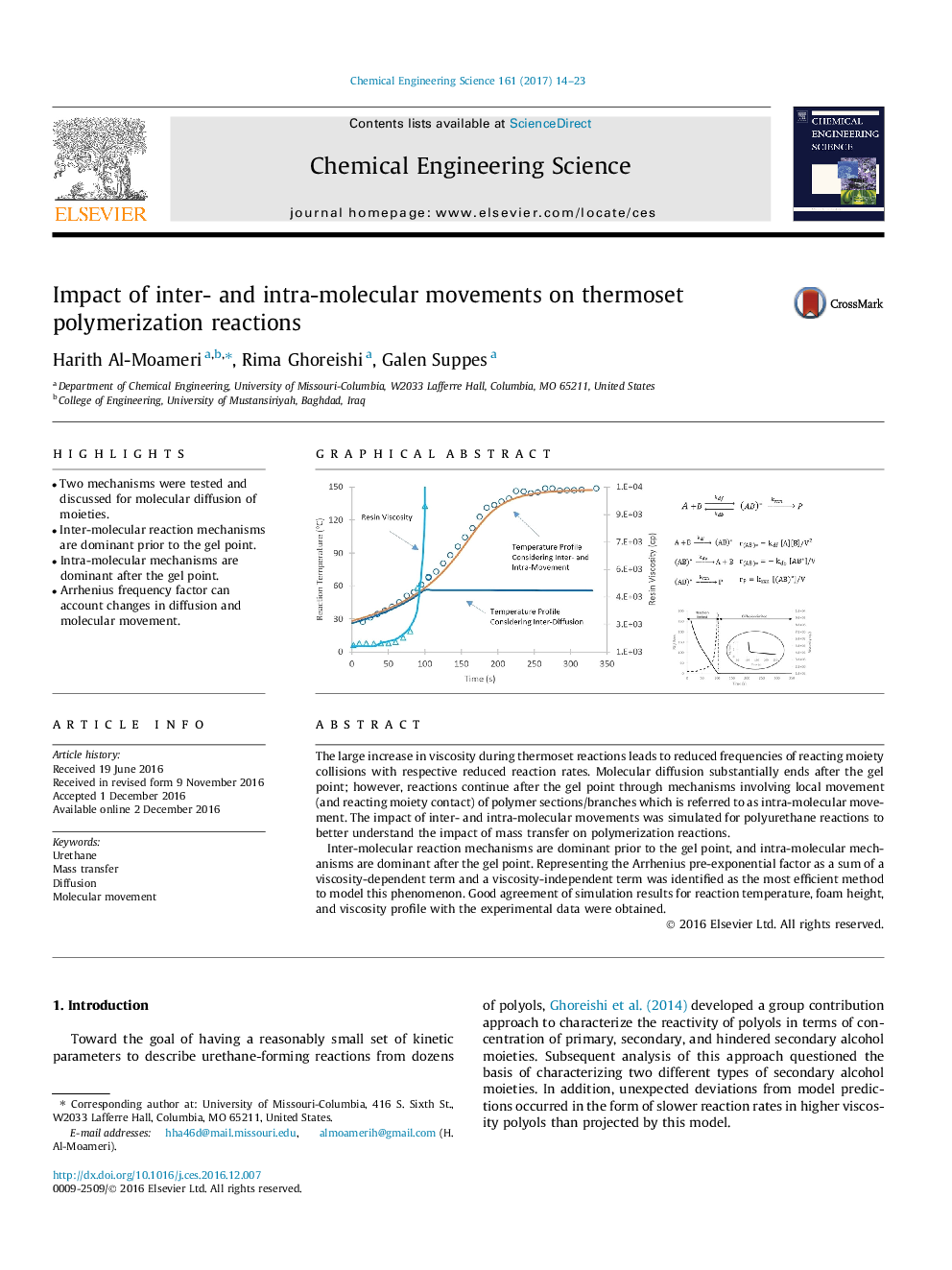| Article ID | Journal | Published Year | Pages | File Type |
|---|---|---|---|---|
| 6467531 | Chemical Engineering Science | 2017 | 10 Pages |
â¢Two mechanisms were tested and discussed for molecular diffusion of moieties.â¢Inter-molecular reaction mechanisms are dominant prior to the gel point.â¢Intra-molecular mechanisms are dominant after the gel point.â¢Arrhenius frequency factor can account changes in diffusion and molecular movement.
The large increase in viscosity during thermoset reactions leads to reduced frequencies of reacting moiety collisions with respective reduced reaction rates. Molecular diffusion substantially ends after the gel point; however, reactions continue after the gel point through mechanisms involving local movement (and reacting moiety contact) of polymer sections/branches which is referred to as intra-molecular movement. The impact of inter- and intra-molecular movements was simulated for polyurethane reactions to better understand the impact of mass transfer on polymerization reactions.Inter-molecular reaction mechanisms are dominant prior to the gel point, and intra-molecular mechanisms are dominant after the gel point. Representing the Arrhenius pre-exponential factor as a sum of a viscosity-dependent term and a viscosity-independent term was identified as the most efficient method to model this phenomenon. Good agreement of simulation results for reaction temperature, foam height, and viscosity profile with the experimental data were obtained.
Graphical abstractDownload high-res image (151KB)Download full-size image
